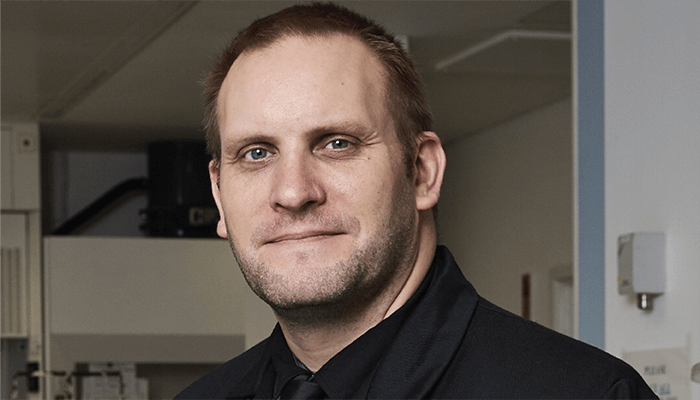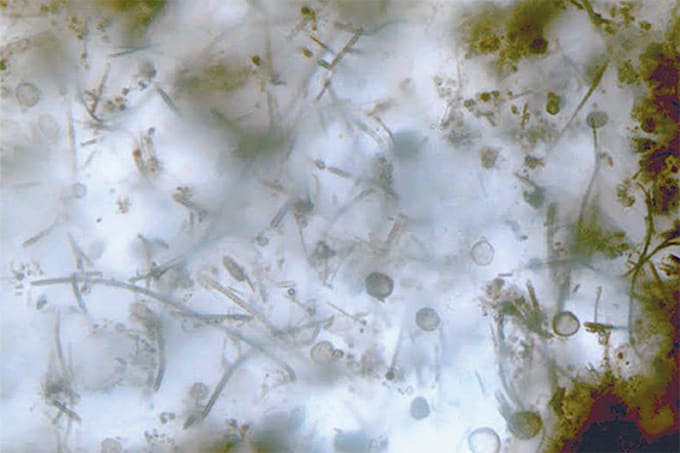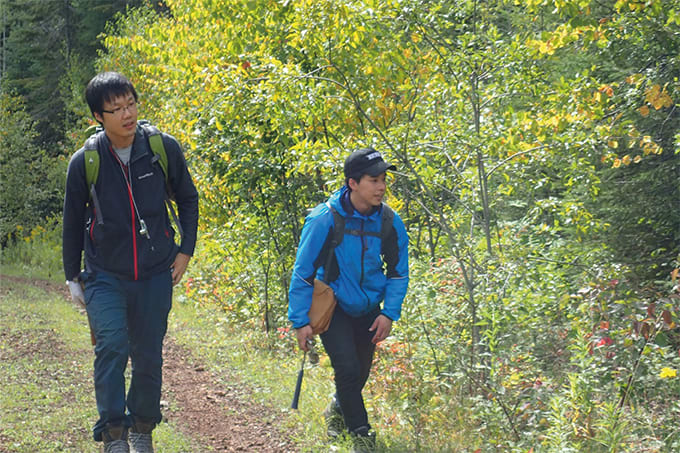A few years ago, “Spice” – a drug containing one or more synthetic cannabinoids – rose to prominence in the UK after images of people (often homeless) stood frozen or collapsed in the street were published on the front pages of national newspapers. The city of Manchester, where I work, has been referred to as the “spice capital” of the UK, but, in truth, the abuse of synthetic drugs is endemic in every major city in the UK and in many cities throughout the world.
Let me take you back to Manchester in 2013; the police were aware of psychoactive substances circulating in what were referred to as "head shops" – specialized shops selling “legal highs” that are structurally similar and mimic the effects of controlled drugs. In 2016, the UK government passed the Psychoactive Substances Act, which made the supply and production and import of new psychoactive substances illegal. The pet shops shut overnight, but it wasn’t long before a black market was established.

With the birth of a robust black market, individuals on the streets started exhibiting much more severe effects than had been seen with the “legal” synthetic cannabinoids, including withdrawal and the catatonic states featured in the headlines. The problem was compounded by the fact that many police officers were uncertain as to the legal status of the synthetic cannabinoids and struggled to identify them on the street – moreover, prevalence and potency varied widely. Violence and collapses in the city surged. One report claimed that 95 percent of the homeless community in Manchester were using spice regularly (1); and a 2016 survey found that 33 percent of inmates in UK prisons had used spice in the last month (2).
As part of a series of initiatives to combat the problem, we at Manchester Metropolitan University joined forces with Greater Manchester Police to co-create MANchester DRug Analysis and Knowledge Exchange (MANDRAKE). The aim was to expand our understanding of what is actually in the products people were taking, as well as exploring the human effects through our academic collaborations. Ironically, the ban on legal highs meant that many academic groups could no longer purchase and test these drugs. Indeed, many groups across the country stopped looking for these compounds because in some cases required specificHome Office licenses – an expensive and time-consuming process – to conduct their research on the now-illegal substances.
Criminologists in other parts of the country had spoken to users, asking about drugs on the street, what they'd been using, whether the drugs were getting stronger or weaker. But it was all subjective. We needed a way to identify and monitor what people were taking. Our lab was fully licensed to hold controlled drugs, and to even make new drugs to use as reference materials. So, what began as an informal knowledge sharing arrangement grew into a formal drug testing facility, running continuously and covering the whole of Greater Manchester. And it was unique in the UK.
The power of NMR
There are three main components to MANDRAKE: reducing harm, gathering intelligence, and developing new technologies that can be used on the front line staff in the police or prison service. If, for example, the police seize a batch of pills and their presumptive tests (normally a colorimetric test) are inconclusive, these samples can be potentially sent to MANDRAKE for some initial presumptive tests, using infrared spectroscopy or nuclear magnetic resonance (NMR) spectroscopy, which are followed up by confirmatory tests and quantification using gas chromatography-mass spectrometry. The final results are usually disseminated within two-and-a-half hours of us receiving the initial sample.
The benchtop NMR device we use is interesting. We were originally approached by a instrument manufacturer, Oxford Instruments, who thought we might be interested in purchasing a benchtop NMR to use when teaching. They demonstrated how it worked by testing different alcohols. I asked whether they’d thought about using it for forensics; they hadn’t. But they had explored meat speciation during the UK’s horsemeat scandal (an exciting decade!) using an algorithm that could fingerprint different leads, which we thought could work in drug-testing context. So, they funded us to develop a similar algorithm for forensics using our in-house library of substances. In the resulting paper, we presented a 93 percent accuracy rate (3) – excellent for a single component for our patented approach.
The main advantage of our pattern recognition algorithmic NMR approach is that it’s extremely easy to use, which is vital if we want prison guards or police officers to use it. Frontline responders aren’t scientists and need a simple discriminator they can interpret – a a red light or a green light so to speak, which was our assumption from the beginning and informed how we developed the algorithm and user interface. In addition, by removing any complicated spectral analysis from the process, you also remove any potential operator bias – which we know exists.
NMR also has some advantages over Raman spectroscopy – though I will say that Raman has advanced since we first started working with NMR. We found that when firing Raman at a tablet or a piece of paper we would get results that just didn’t make sense because it was picking up the excipients or something in the background. With NMR, you extract the drug out of whatever matrix is in there, which produces a better match.
And because the device was portable, easy to use and rapid in terms of its turnaround time, we were able to trial frontline analysis. We decided to focus on MDMA initially because it is the most common controlled drug in the nighttime economy. And because the algorithm allows us to identify a drug without using a reference standard material (meaning we didn’t have to carry around a sample of MDMA, which would be illegal!) we were able to deploy at a nightclub in Manchester. We get the results back in 2.5 minutes and are also able to detect anything dangerous, both in terms of potency or another substance cut with a pill. During this pilot project, we found the world’s strongest MDMA tablet – four to five times the usual dose. We issued a warning on social media, which allowed individuals to dispose of the tablets before taking them and putting themselves in serious danger.
The work that we do to identify substances and rapidly issue warnings feeds into our broader role as an intelligence gathering service, which is crucial to fighting the spice epidemic. We are able to provide quantitative data on the changes in spice potency over time, which the police can use to paint a more comprehensive picture of the market. For example, we’ve seen sudden increases in potency after manufacturing errors and decreases following the arrest of major players. We now know which strains are on the street, how their potency is changing over time. So, if we hear reports of sudden increases in potency or of new strains, we can test those, issue warnings and create reference materials to use in the future. Overall, it allows the police to be more proactive in dealing with drugs.
In one notable example, an individual, who had smoked spice and then felt very unwell, decided to submit the rest of it to find out what it was – a legal move. We were able to synthesize the compound to confirm the structure – a completely new cannabinoid that had not been seen in the UK before (it had only been found in the US). Such information feeds into the national and international surveys on drugs and can help the police understand the wider situation.
In addition to testing batches of drugs, we’re also involved in developing new ways of finding out whether someone has taken spice. For example, last year we – alongside the University of Bath – received a £1.3 million research grant to help refine a portable device based on a simple fluorescence-spectral-fingerprinting-based saliva test, developed by the Bath group in 2019 (4).
The battles to come
Fortunately, the legislative changes we’ve seen to combat new psychoactive substances – both in the UK and in China – have reduced the number of new drugs on the market. A few years ago, we were running samples and seeing completely new substances on a regular basis, but that has subsided. The main challenge now is understanding local variations in potency so that we can identify unusually strong batches on the streets and issue warnings in a matter of hours.
Many of the devices out there are black and white in terms of “is it or isn’t it there?” For example, we got a sample from the police that they believed was MDMA, but the infrared kept returning a negative result. It turns out it was 6-bromo-MDMA, but it has an additional bromine on the aromatic ring in the drug, so it didn’t initially match exactly what was in the database. Our system was able to say that, although it is a new substance and isn’t in the database, it is an MDMA derivative. So, if people are collapsing at an event or on the street, we can pass that information to welfare teams or paramedics who can treat people in a similar way to how they might treat someone who took the derivative drug. If we can increase the number of field-deployable devices that are able to do this, we could access more robust quantification and therefore more effective harm reduction and knowledge gathering.
I’ve also had conversations with people looking at forensics. In the UK, we have major backlogs in forensic services, which leads to a lot of additional police time. Hypothetically, if a police officer arrests someone because they’ve found a bag of white powder in their possession. Instead of waiting days or weeks for the results of testing the sample, they could run it through the NMR and get a result the same day – and potentially find out that their suspect was actually selling crushed paracetamol, for example.
There are many ways we can use rapid, portable, easy-to-use analytical tools.
Oliver Sutcliffe is a Senior Lecturer at Manchester Metropolitan University and Director of MANDRAK
References
- Manchester Evening News, “Disturbing video shows how new strain of Spice turns Manchester’s homeless into ‘the walking dead’” (2017). Available at: https://bit.ly/3yY1K4x
- EMCDDA, “European Drug Report 2015: Trends and Developments” (2015). Available at: https://bit.ly/3OXMsSZ
- LH Antonides et al., “Rapid Identification of Novel Psychoactive and Other Controlled Substances Using Low-Field 1H NMR Spectroscopy,” ACS Omega, 4, 4, 7103-7112 (2019). DOI: 10.1021/acsomega.9b00302
- B May et al., “Synthetic Cannabinoid Receptor Agonists Detection Using Fluorescence Spectral Fingerprinting,” Anal Chem, 91, 12971-12979 (2019). DOI: 10.1021/acs.analchem.9b03037




